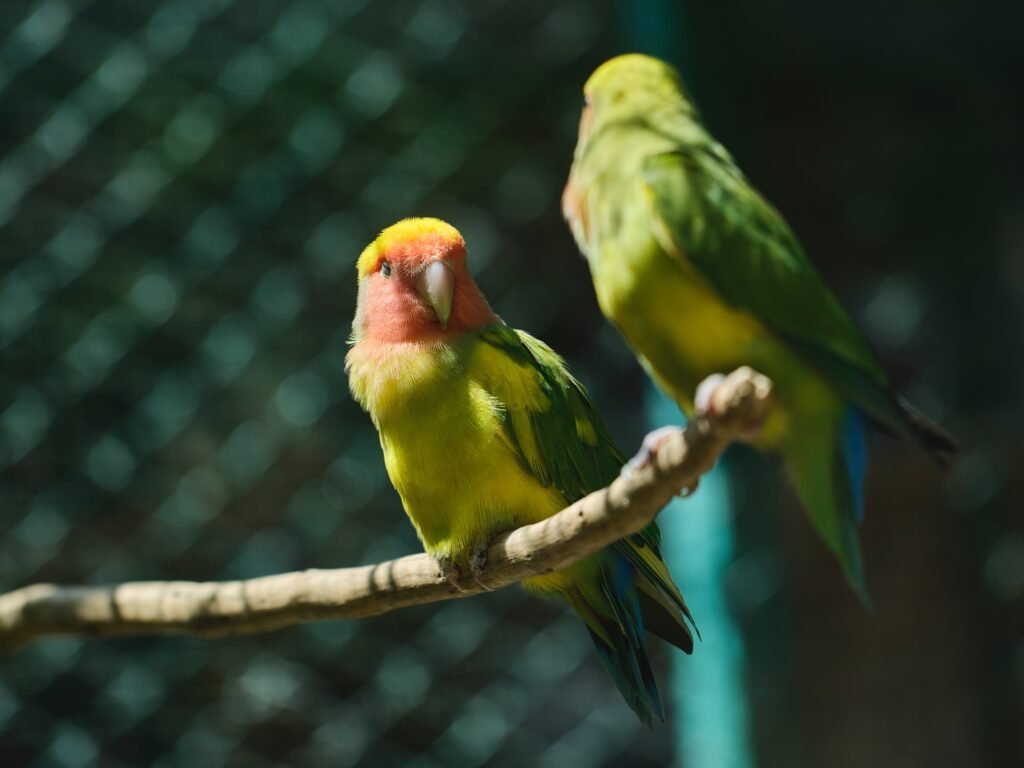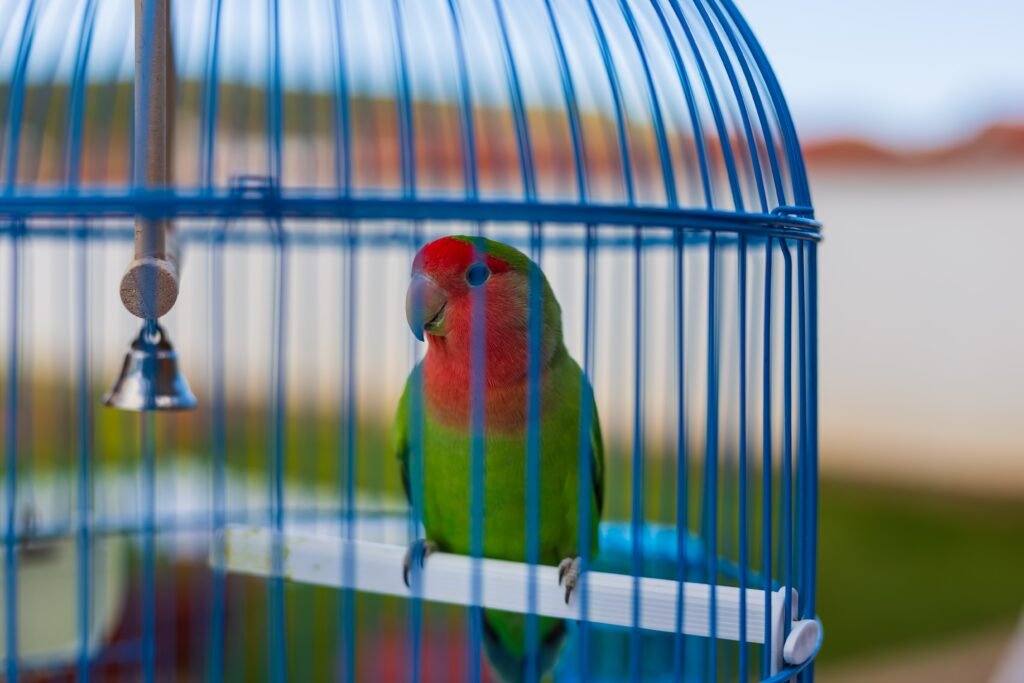Lovebirds are fascinating creatures known for their beautiful colours, affectionate behaviour, and their ability to communicate with each other. These small parrots express themselves uniquely, often through vocalizations, body language, and even the occasional dance. In this article, we will explore the intricacies of lovebird communication and delve into the fascinating world of their language.
Vocalizations: A Symphony of Sounds
Lovebirds are highly vocal birds, constantly communicating with each other and their human companions. Their vocal repertoire includes various sounds, each serving a different purpose. Let’s take a closer look at the different vocalizations of lovebirds:
- Chirping and Singing
Lovebirds express their happiness and contentment through joyful chirping and singing. These delightful sounds can be heard when lovebirds are in a relaxed state or when they are enjoying each other’s company. Chipping and singing serve as a form of communication to signal their well-being and maintain social bonds within their flock.
- Chattering and Chirping
When lovebirds engage in playful interactions or are excited about something, they often produce rapid chattering and chirping sounds. These high-pitched sounds signal their enthusiasm and can be quite entertaining to witness. Lovebirds use this vocalization to express excitement and engage in social play with their companions.
- Whistling
Lovebirds are excellent mimics and can learn to whistle tunes or imitate household sounds. They may pick up melodies from their environment or even mimic the sound of their human companions. Whistling is their way of showing off their vocal abilities and engaging in interactive communication. It is a form of self-expression and a means to attract attention from their flock or human caretakers.
- Squawking
Like parrot species, lovebirds can produce loud squawking noises when they feel threatened, startled, or want to grab attention. Squawking can be a warning signal, indicating they are feeling distressed or something is amiss in their environment. Lovebirds use this vocalization as a defence mechanism to alert others of potential dangers and to establish their presence in their territory.
Body Language: The Silent Communication
While lovebirds are vocal creatures, a significant portion of their communication occurs through body language. Observing their posture, movements, and expressions can gain valuable insights into their emotional state and intentions. Let’s explore some of the key body language signals of lovebirds:
- Head Bobbing
Lovebirds often engage in head-bobbing movements, especially when they are excited or trying to court a potential mate. This rhythmic motion is an endearing display of affection and can be observed during their bonding rituals. Head-bobbing is a way for lovebirds to demonstrate their interest in a mate and establish a connection with their partner.
- Wing Fluttering
When lovebirds feel content and secure, they may exhibit wing-fluttering behaviour. This involves rapidly flicking their wings while keeping their bodies stationary. Wing fluttering is a sign of comfort and relaxation. Lovebirds use this body language to convey a sense of ease and well-being, indicating that they are calm and peaceful.
- Tail Wagging
Lovebirds have a habit of wagging their tails from side to side. This behaviour is typically seen when they are curious about something or trying to draw attention to themselves. Tail wagging can also indicate that they are in a playful mood. Lovebirds use this body language to express their curiosity, seek interaction, and display their playful nature.
- Preening
Preening is an essential aspect of lovebird communication and bonding. Lovebirds groom each other’s feathers to strengthen their social bonds and show affection. They use their beaks to clean and arrange each other’s feathers, reinforcing their bonding and companionship. Preening is a nurturing behaviour that helps lovebirds maintain their physical appearance, enhance their trust and intimacy, and build a sense of security within their relationship.
Dance: The Language of Love
Lovebirds are known for their enchanting courtship dances, which are part of their elaborate communication rituals. These dances serve as a way for lovebirds to express their love and strengthen their bond. During a courtship dance, lovebirds engage in synchronized movements, often accompanied by vocalizations and elaborate displays of affection. They may bob their heads, puff up their feathers, and even offer food to each other as a sign of courtship and devotion. These dances play a crucial role in finding a mate and serve as a way for lovebirds to reinforce their social hierarchy within a flock or a pair.
Conclusion
Lovebirds have a rich and elaborate language that consists of vocalizations, body language, and dancing. By understanding their various forms of communication, we can better appreciate the depth of their emotional lives and establish a stronger bond with these captivating creatures. So, the next time you observe lovebirds chirping, bobbing their heads, or engaging in a synchronized dance, remember that they are engaging in a language all their own – the language of lovebirds.
Lovebirds Talking: Unlocking the Language of Lovebirds – FAQ
Q: How do lovebirds communicate through vocalizations?
A: Lovebirds communicate through vocalizations, including chirping and singing to express happiness, chattering and chirping when excited or playful, whistling to show off their vocal abilities, and squawking as a warning signal or defence mechanism.
Q: What are some body language signals of lovebirds?
A: Lovebirds communicate through body language, such as head bobbing to display affection and court a mate, wing fluttering to indicate comfort and relaxation, tail wagging to express curiosity and playfulness, and preening to strengthen social bonds and show affection.
Q: What is the significance of lovebird dances?
A: Lovebird dances serve as a way for lovebirds to express love, strengthen their bond, and reinforce social hierarchy. During courtship dances, lovebirds engage in synchronized movements, vocalizations, and displays of affection, such as head bobbing, feather puffing, and offering food to each other.
Q: How can understanding lovebird communication help us bond with them?
A: By understanding lovebird communication, we can better appreciate their emotional lives and establish a stronger bond. Recognizing their vocalizations, body language, and dances allows us to interpret their needs, emotions, and intentions, fostering a deeper connection with these captivating creatures.


